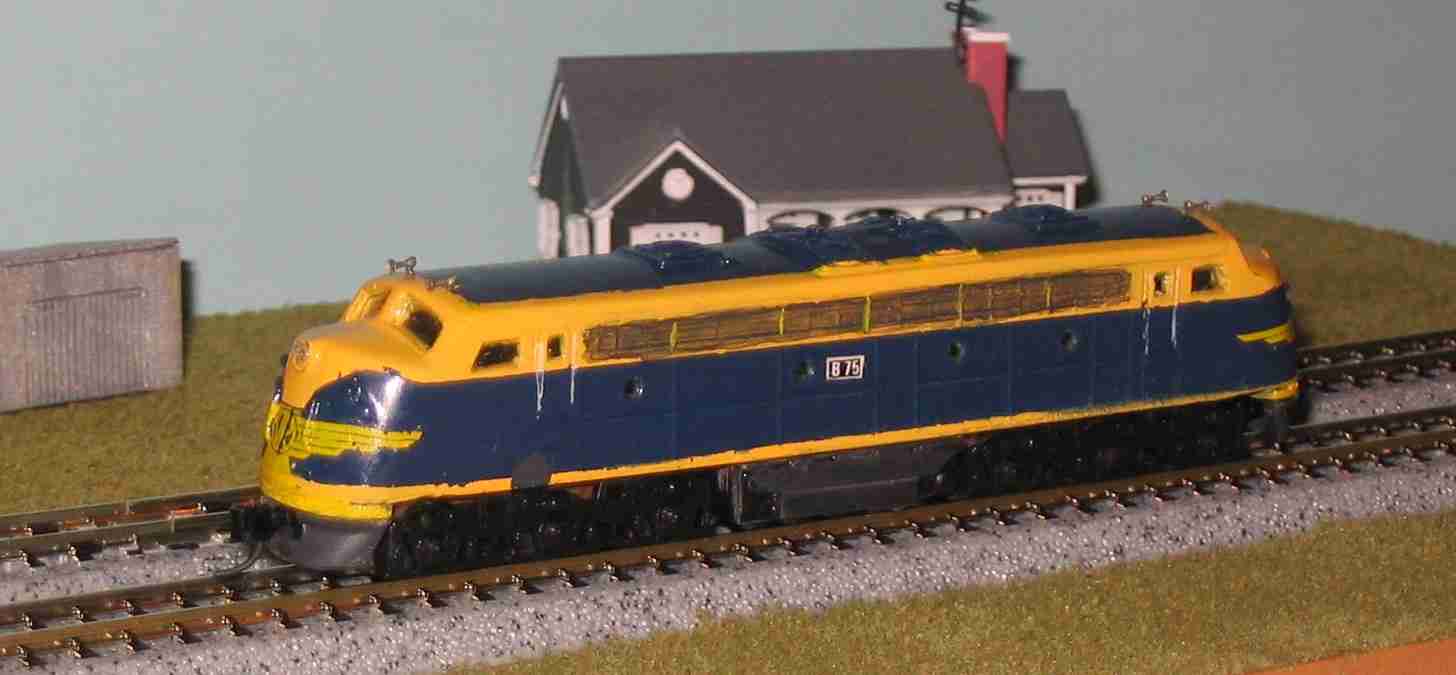
B class Locomotives were introduced into Victoria in the 1950s with many still running today, though a bit like great grandpa's old axe, still the original but with the handle replaced three times and the head replaced twice. First appearing in VR Blue and Gold, later in V/Line orange and grey and, in recent times, bloody anything.
B75 still remains in VR blue and gold livery, though in a rather sad state waiting for a rebirth as a heritage loco.
This model is made from a urethane kit as described below. Late in August 2009, a forthcoming RTR B Class loco was announced, to be sold through Aust-N-Rail. See the pre-orders section of the Aust-N-Rail website for details. I'm not getting any commission for this, but if you're thinking of a B Class, then take a good look at those, they are very impressive.